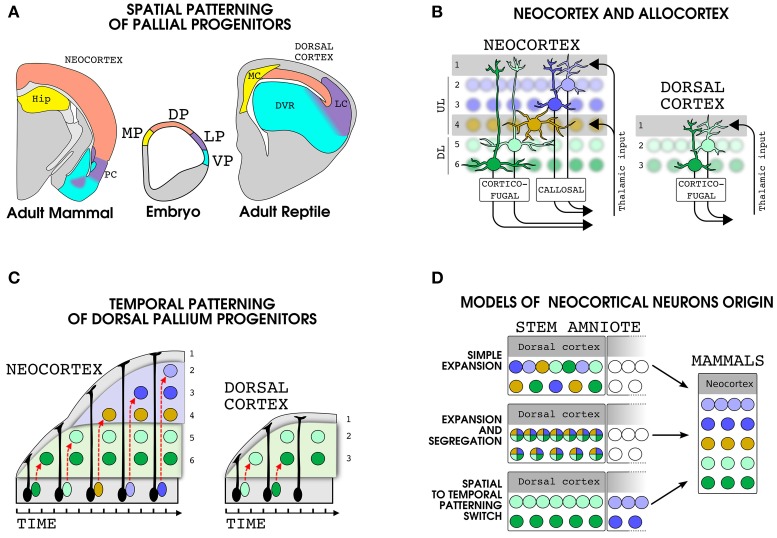Figure 1.
Development and evolution of dorsal pallial derivatives in amniotes. (A) Spatial patterning mechanisms subdivide the embryonic pallial progenitors in at least four domains: Medial pallium (MP, yellow), dorsal pallium (DP, pink), lateral pallium (LP, violet) and ventral pallium (VP, cyan). The brain regions produced by each domain are shown in a mammal (left) and a reptile (right) with the same color code. (B) Schematic representation of the organization of the cellular layers and main input and output projections in the neocortex (left) and in the reptilian dorsal cortex (right). (C) Development of dorsal pallium glutamatergic neurons in mammals and reptiles. In the neocortex the same progenitor produces multiple cell types in an inside-out sequence. In the reptilian dorsal cortex, the dorsal pallium progenitors produce a reduced number of cells in an outside-in sequence. The migration of immature neuroblasts is indicated by a dashed red arrows. Please note that, along with our theory, in (B,C) we used the same color code for the mammalian DL and reptilian dorsal cortex neurons. Nonetheless, it is important to note that the precise correspondence between layer II and III neurons of the dorsal cortex and layer V and VI of the neocortex is not known. (D) Models of the evolution of the principal neurons of the neocortex. Each color represent a set of gene modules specifying a particular neuronal types in the modern neocortex (right). Three different possibile pattern of expression of these gene modules in cells of the dorsal cortex of the stem amniote are shown (left). Abbreviations: HIP, hippocampus; MC, medial cortec; LC, lateral cortex; PC, piriform cortex.

